
Nearly twice as many people face losing their homes in Central Florida this year compared with 2006, many of them borrowers struggling to repay adjustable-rate loans or investors unable to sell in a glutted market.
Through the first eight months of 2007, more than 11,000 homeowners in a seven-county area in and around Orlando have entered the foreclosure process by defaulting on their mortgage payments -- 85 percent more than all of last year.
An Orlando Sentinel analysis of public records gathered by RealtyTrac Inc., which sells foreclosure data online to prospective home buyers, found the problem cuts across differences in income, race, ethnicity and geography:
Osceola County has been hit hardest in the region, with more than triple the number of defaults so far this year compared with all of 2006. But Volusia, Brevard and Polk counties already have more than twice as many defaults as all of last year. And Orange, Lake and Seminole counties have registered increases ranging from 42 percent to 57 percent.
Communities with widely divergent income are affected. The ZIP codes with either a high volume or a high concentration of defaults range from east Pine Hills and north Poinciana -- areas with median household incomes in the bottom quarter for Central Florida -- to Waterford Lakes and Celebration, communities whose median incomes fall within the top 5 percent for the region.
The complexions of the communities also vary. The most-affected ZIP codes range from Taft and south Poinciana, which are nearly two-thirds Hispanic and black, to Windermere and Davenport, which are more than three-quarters white.
Single-family homes dominate the foreclosure rolls, constituting about nine of every 10 defaults and public auctions. Condominiums come in a distant second, with about one in every 20 defaults and auctions.
The situation is likely to get even worse, because the data indicate that the number of loan-default notices has jumped sharply in recent months.
Experts say the evidence points to both homeowners living beyond their means and investors grasping for quick riches as prime sources of the problem, with foreclosure notices stretching from the new resort-home subdivisions near Walt Disney World in Osceola to the established starter-home neighborhoods of Deltona in Volusia County.
"There is blame for everybody: builders who overbuilt, Realtors who oversold, lenders who weakened loan criteria and borrowers who stretched too far knowing nothing goes up forever," said Doug Duncan, chief economist for the Mortgage Bankers Association.
Florida is one of four states driving the nationwide rise in foreclosures, Duncan said. The others are California, Arizona and Nevada.
He attributed the increase in Florida at least partly to investors, noting that home construction far outpaced population growth in the Sunshine State during the five-year housing boom. Now, with home prices dropping, many first-time owners have no equity with which to refinance their mortgages, and investors who had hoped for a quick and profitable resale cannot sell for what they owe, Duncan said.
Statewide this year, home lenders started foreclosures on more than 60,000 properties through August -- three-quarters more than during all of 2006, according to the Sentinel analysis of RealtyTrac data. During those same eight months, more than 16,000 Florida properties were put up for sale at public auctions, an increase of about two-thirds from all of last year.
How foreclosure happens
Lenders initiate the foreclosure process in Florida once a homeowner has defaulted on a loan by missing three payments. At that point, the bank asks the court to set a sale date for the property. Once a judge sets the auction date, servers notify the homeowner. The public can bid on the property at auction. If there are no bidders, the lender repossesses the property.
Don Casselman of St. Cloud started missing mortgage payments on his home earlier this year, after work injuries and a failed attempt to start a duct-cleaning business. His century-old house weathered Hurricane Charley three years ago with only a chimney brick missing, but when Casselman, saddled with two mortgages, tried to sell it recently, he got no takers.
Last month, Minneapolis-based U.S. Bank forced his family to leave.
"They take people who are not in the best of credit, and they treat us like we're millionaires -- then they try to rip every dollar that you can make from your pocket, and they try to draw blood," said Casselman, who couldn't persuade lenders to refinance his adjustable-rate loans when the $974 monthly payment was about to double. "They try to keep a poor man poor."
Osceola hard-hit
Fast-growing Osceola County, with its production-line subdivisions and service-job wages, is the local epicenter of the mortgage meltdown.
The one-time cattle county on Disney World's doorstep has recorded one foreclosure for every 184 residents so far this year -- compared with one for every 339 people in Orange County and one for about every 450 residents in Seminole and Lake counties.
Linda Goodwin, a real-estate agent in Kissimmee, says foreclosures were inevitable in Poinciana, a 47,000-acre working-class community that straddles the Osceola-Polk county line. Prices for basic, three-bedroom homes there had doubled since 2000, as they had most everywhere else, Goodwin said.
"We knew this had to stop, because salaries had not gone up that much," she said. "That's why we're seeing so few buyers."
South Poinciana is home to the worst-hit ZIP code in Central Florida -- 34759 -- where nearly 300 homeowners have defaulted on their mortgages so far this year.
The community is one of the youngest in the region, with a median age of 33. It also has one of the highest concentrations of Hispanic residents in Central Florida, though other heavily Hispanic communities, such as Pierson in Volusia County and Mascotte in Lake County, have not encountered the same default rates.
In all of Osceola County, defaults through August totaled 1,328, compared with 416 for all of last year.
"A lot of houses in this area were owned by the British, [and] a lot have gone through foreclosure," said Clara Arango, who lives with her four school-age sons in a neighborhood south of Disney World filled with investor-owned vacation homes.
Her street of pastel stucco houses has more "For Sale" signs in the yards than cars in the driveways. She used to live in a larger home nearby, but the family lost it to foreclosure last year after she and her husband divorced.
Jump in loan defaults
The biggest indication that the region's and the state's mortgage woes are far from over is the recent spike in the number of property owners defaulting on their home loans.
In the seven counties surrounding Orlando, the number of monthly loan defaults recorded in court has jumped from 611 in January to 3,181 in August. Statewide, monthly loan defaults increased from 2,919 in January to 18,676 in August.
In Florida, one in every 33 homeowners with an adjustable-rate loan was in foreclosure as of June, according to Mortgage Bankers Association data, compared with fewer than one in every 100 homeowners with a fixed-rate loan.
Loan defaults are spiraling into auctions more often these days than in past years, experts say, because property owners' options are limited when they can neither sell the house nor refinance the loan. And Florida buyers who used "subprime" loans to finance their purchase have been 10 times more likely to lose their property than homeowners with conventional-rate loans, according to MBA data.
Even some homeowners who built up some equity are losing their dwellings because they took out second mortgages to pay such things as credit-card debt, said Richard Schram, special-projects manager at Consumer Credit Counseling Service of Central Florida and the Florida Gulf Coast.
"They lose their job, they're in trouble," he said.
Whatever the reason for falling behind, a homeowner who misses three monthly payments faces added bills that include lender's fees, court costs and other expenses.
"The [monthly] payment is $1,200 when they buy," Schram said. "When they fall [three months] behind, it goes to an attorney, and that adds $2,500 to $3,000. Suddenly they're $6,000 behind, and the lenders may want another inspection or appraisal," which further drives up the debt.
To make matters worse, homeowners in financial trouble usually don't seek help restructuring their debts until it's too late, Schram said. In July, for example, his nonprofit credit-counseling service offered an Orlando workshop for homeowners titled "The ABCs of Mortgage Foreclosure." Two people showed up.
"We still have people who call and say, 'I need to go through counseling today, because my property is going to be sold tomorrow,' " he said.
Flooding the auction block
More defaults inevitably lead to more homes on the auction block.
In Central Florida, more than 3,000 properties were put up for sale at public auction from January through August, about two-thirds more than for all of 2006. They ranged from a $3.3 million mansion in Isleworth, with five bedrooms and 6.5 bathrooms, to a $131,000 half-century-old house in Deltona with two bedrooms and a single bath.
Brevard County has recorded the biggest jump in auctions so far this year of any county in the state: nearly a sixfold increase to 677 compared with all of last year. Osceola County was fifth in Florida through August by the same measure, with 333 auctions, or four times as many as all of last year.
Palm Bay, whose town motto is "A Perfect Place to Grow," has had nearly 100 properties sent to auction through the first eight months of the year.
Anticipating an eviction from their Palm Bay home, Lori Groos and her family recently moved into a rental and are working with their lenders on a "short sale," in which the house is to be sold for less than the amount the family owes.
Groos said the family's debt grew when she and her husband took out a second mortgage to repair damage from the 2004 hurricanes. Then their income shrank when Groos opted to stay home from her Internet Web-design job to watch the couple's children.
"Banks are willing to work with the short sales, just to keep the house from coming back to them," said Groos, who hopes the house sells soon because interest continues to accumulate on the couple's loans until a buyer is found.
North Palm Bay, where the Grooses live, is generally representative of Central Florida as a whole, with a median age of 38 and a median household income of $45,980 a year. The reason for the flood of foreclosure auctions, however, may be the concentration of investor-owned properties in town.
Sharon Maynard, a Palm Bay real-estate agent, says she knew the area was headed for trouble back in 2005, during the height of the housing boom, when home prices jumped 10 percent in a single month. Out-of-state buyers, attempting to seize what they saw then as an opportunity, were snapping up relatively affordable new homes in hopes of reselling them soon after for huge profits.
"It's people who were trying to flip houses: buy them from the builder" and sell them to someone else, Maynard said. "But the market went down, and they weren't able to sell them."
Sean Snaith, an economist and professor at the University of Central Florida, also blames investors for the pockets of mortgage misery in places such as Palm Bay and Kissimmee.
Whether the Federal Reserve's recent half-point cut in interest rates will be enough to thaw the credit markets and slow the region's rising foreclosure rate is not yet certain, Snaith said. But at least the local economy appears to remain strong enough to weather the real-estate slowdown.
"That's kept this from getting worse than it could be," he said.
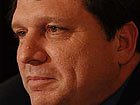
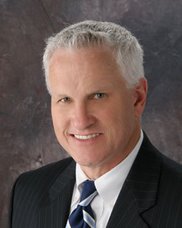






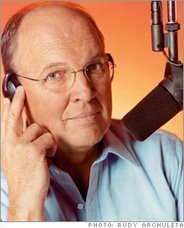
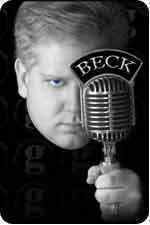













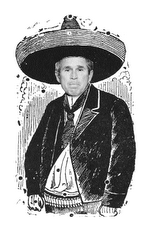





No comments:
Post a Comment